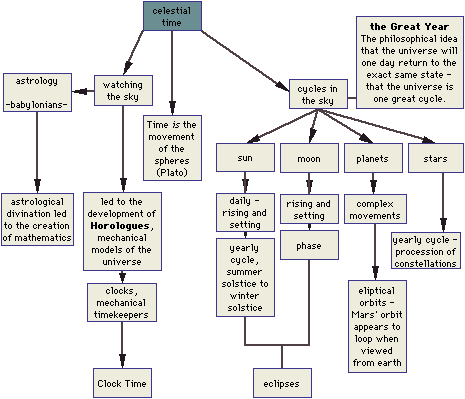

When life began to develop, it did so in accordance with its environment.
That environment included the rhythms of celestial time. Night and day,
the cycle of the year, the long periods of climactic change. As life became
more complex, some of these rhythms became internalized. Most plants and
animals have daily and yearly, some even monthly, biological cycles; of growth,
of rest, of reproduction, of gathering & storing food, of migration. These
cycles all derive from the basic rhythms of light and energy on the Earth
- the rising and setting of the sun, the changing of the seasons, the phase
of the moon and concurrent ambient light levels at night.

Early humans looked up in the sky and could observe patterns within the rhythms of the heavens. The patterns began to be useful - when a certain constellation begins to rise higher in the sky each night, it is nearing the time for the elk to return. When another constallation begins to appear, it is nearing the time to plant the wheat. It became cleat that there are many cycles, and that they can be counted. Smaller cycles fit into larger ones, or maybe four cycles occur in the time of three other cycles. The heavens were dancing, and it was a slow, methodical dance. Calendars were devised to map that dance - to rationally predict the coming of seasons or the convergence of planets.
Some of the more curious and mechanically advanced scientists, philosophers and astronomers constructed horologues - mechanical models of the universe using gears and wheels to approximate the movements of the heavens above. These complex, geared machines led to the development of the clock.
The clock itself does nothing more than divide the celestial time element
of the day into a series of equal units - hours, minutes and seconds.
TimeWorks was created by Jeremiah Lyman Moore